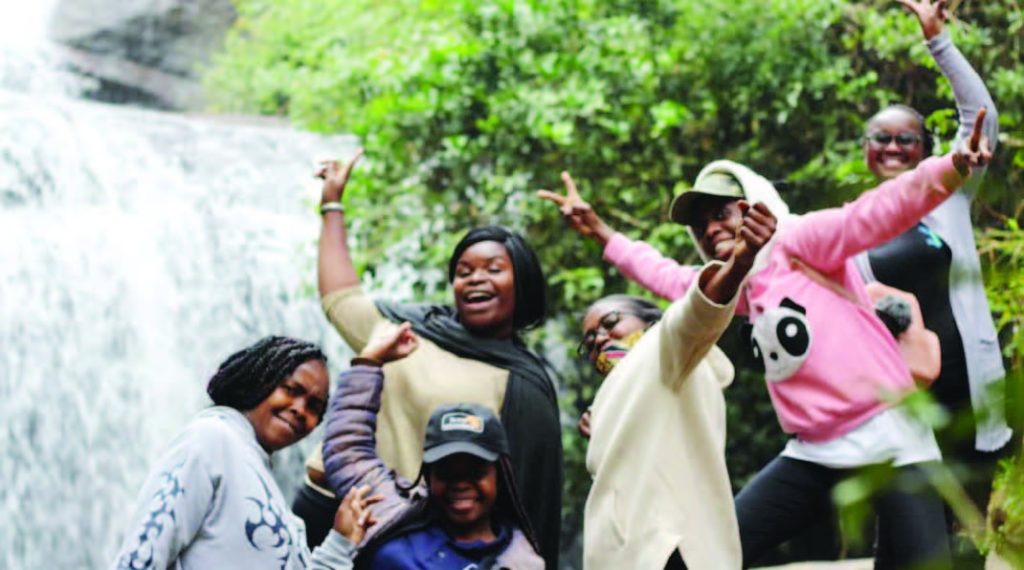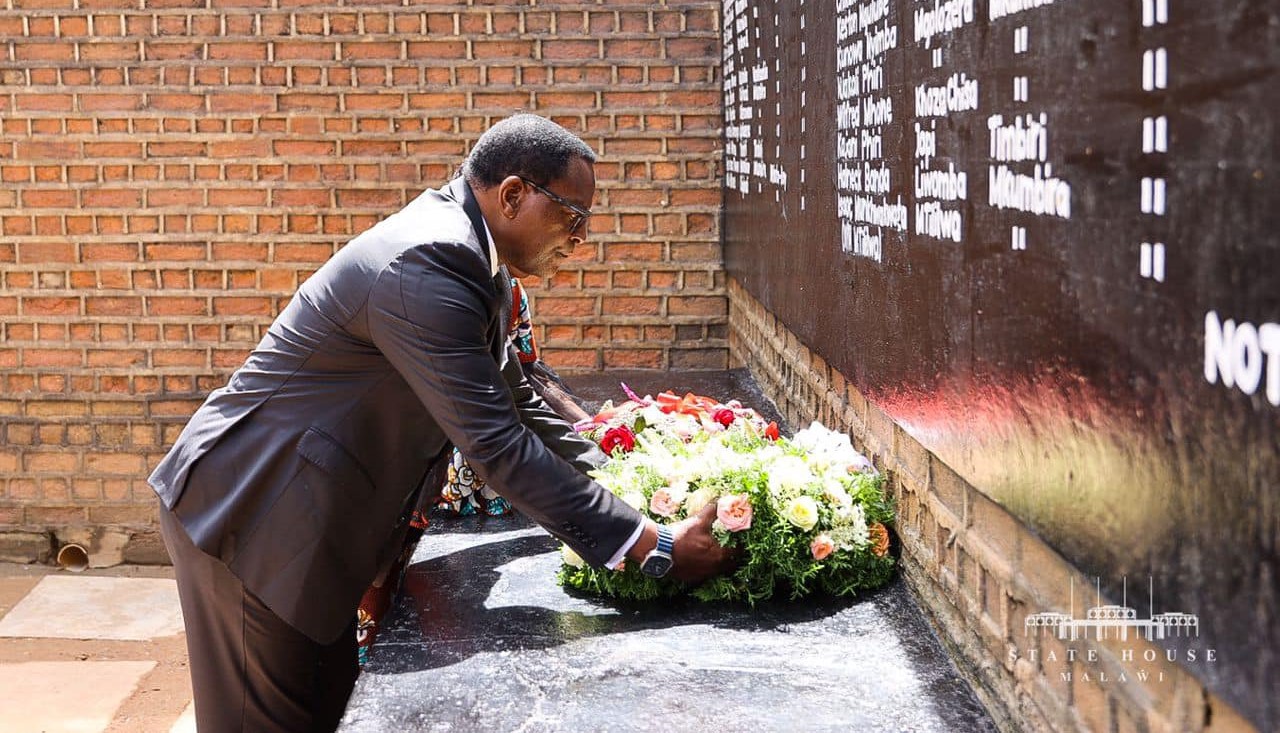Up for local tourism
Juma Tebulo has been going up the Mulanje Mountain from his Mbewa Village in T/A Mabuka’s area since he was six. In the early stages, he could only hike to the lower levels of the mountain, like Dziwe la Nkhalamba.
Today, as he looks forward to turn 35 in November, Tebulo is one of the professional tour guides who can take you to the various peaks on the mountain like Chambe, Lichenya, Madzeka and the highest spot in southern central Africa, Sapitwa.

And on a bright afternoon, if you ask him to take you to Dziwe la Nkhalamba, he will not only show you the way to this pristine and natural pool, but tell you so many stories about it. For safety, he will tell you the deep green colour the water takes is sure sign that it is very deep. Some records show the pool is 60 metres deep.
“There used to be an old woman up the falls. When people came, she used to dive from the top and disappear into the pool. That is why to this day it is called Dziwe la Nkhalamba,” says Tebulo.
But then, a ten-minute trek down the Likhubula River, where the pool is located, presents you a sad tale. Here you find skulls and bones in a cave. There are also some clay pots.
“These are bones and skulls of some victims of leprosy. You know in the old days, they were banished from the village and left in the wild for fear of spreading the disease. When they knew they were going to die, they would crawl to this cave and here they would die,” says Tebulo.
The story of bones of leprosy victims abound in some Malawi tourist attractions. On Zomba Mountain there is the Chingwe’s Hole. It is said that lepers were thrown down the hole and there bones were found in a river miles below. The corpse-infested river got a name: Namitembo River.
The question that arises, mostly, when Mulanje Mountain comes to mind, is that: Are there spirits on the mountain? You can put it to Tebulo, he will tell you stories about food that would appear mysteriously for you to eat without inviting friends are passed on from generation to generation.
Yet, he adds: “I have never experienced these mysteries. We feel the spirits moved to deeper areas as more and more peopleare going up the mountain.”
In the past, Tebulo could escort tourists up the mountain three times a month. For foreign tourists, the rate is US$25 (about K20 275) per day while for locals, the rate is K10 000 per day. Where the tourists have heavy loads, as some can spend up to five days up the mountain, a porter’s services are needed.
But that has changed. Since the onset of the Covid-19 pandemic, the number of tourists has dwindled. Between January and July this year, he has only escorted tourists once.
“Since July to this day [August 4 2021], I have not gone up the mountain. I am struggling to feed my three children and my wife. I wish I had capital to start a business until the tourists numbers normalised again,” says Tebulo.
About 27 kilometres from Zomba City is Malosa. Here, a few minutes down the dirt road towards the west you find a mysterious tree. The tree is, essentially, a forest on its own as it disappears into the ground at one point only to resurface a short distance away as a totally new tree. It is impossible to find the original tree, as the whole area is a vast interconnected mesh of woven trunks.
One thing about the place is its serenity. As Osman Masajiri, one of the guides there, will tell you. This may be the reason the Anglican Church established its Diocese of Upper Shire here. The stone altar that was used as the faithful prayed in the shades of this mysterious tree in the early days is still there.
This is also the home of the Chilema Ecumenical Lay Training Centre run by the Blantyre Synod of the Church of Central Africa, Presbyterian. The serenity of the area provides a good mood for reflection, amusement and study.
“When people saw this tree, they believed this is a deformity. Hence, they called it Chilema. This area is predominantly Yao so when they saw the tree they said awa ni malosa [this is bewildering!]. To this day, the area is known as Malosa,” he says.
Like Tebulo, Masajiri will also tell you how the number of foreign tourists has dwindled, especially with the Covid-19 pandemic. He says apart from few indigenous tourists who visit the tree at a fee, some have been organising weddings at the site.
A wedding at the site, certainly, would provide a memorable experience.
Kondwani Chamwala, Mulanje Mountain Conservation Trust (MMCT) public relations officer and an avid traveler under the Team Adventure banner, says the tree is called the Banyan Tree. In fact, it is the national tree for India, bearing the scientific name Ficus bengalensis.
The Zomba Mountain has lots of interesting sites. These include the beautiful sceneries at Mulunguzi and Chagwa dams. There are breathtaking views and grandeur at the Emperor’s View and Queen’s View, the trout farm provides a peaceful feel.
At William’s Falls you find people like Johabu Matandika. Some sell an assortment of berries, wild flowers and precious stones visitors can buy and take home as mementoes.
“I used to make K50 000 a week but these days we have no visitors. If I make K10 000 in a week, I am very lucky,” says Matandika.
Malape Pillars, at the foot of the Chikala Hills in Machinga is another attractive tourism spot. Here, if you ask lead guide Kawinga Gopola will tell you foreign tourists have stopped trekking to the mysterious pillars to hear stories of how strange voices could be heard and maize flour could be laid to dry by unknown people.
“I wish more and more locals could come and visit. We have seen some musicians like Lucius Banda coming here to shoot their music videos that promotes the place. We also have a dance troupe that people can appreciate our culture,” says Gopola.
The Covid-19 pandemic has hit the tourism sector hard. According to statistics, in 2020 tourism and trade contributed 3.3 percent (about K207 billion) of Malawi’s gross domestic product (GDP) down from 6.7 percent (K416 billion) in 2019. It is further reported that 167 000 people of the 516 000 lost their jobs in the sector during the period.
Regional tourism officer (South) Christine Chimangeni says the ministry is aware of the dwindling numbers of foreign tourists due to travel bans and lockdowns in some countries due to the pandemic. For that reason, the ministry is in a drive to promote domestic tourism.
“Malawi has lots of scenic sites. It is a captivating country. We have to take the steps to encourage Malawians to visit these interesting places. You will find that some places, like the Mathithi Falls in Machinjiri in Blantyre are easy to reach, yet very few residents know about them,” she said.
It is, without doubt, that the gear the ministry is engaging may yield some fruits. Just this month, Minister of Tourism, Culture and Wildlife Michael Usi will join musician Lawi in a Mulanje Mountain hike to raise awareness on the preservation of the mountain. If Usi reaches any of the peaks, even the Sapitwa target, it will be a change in the face of local tourism.





